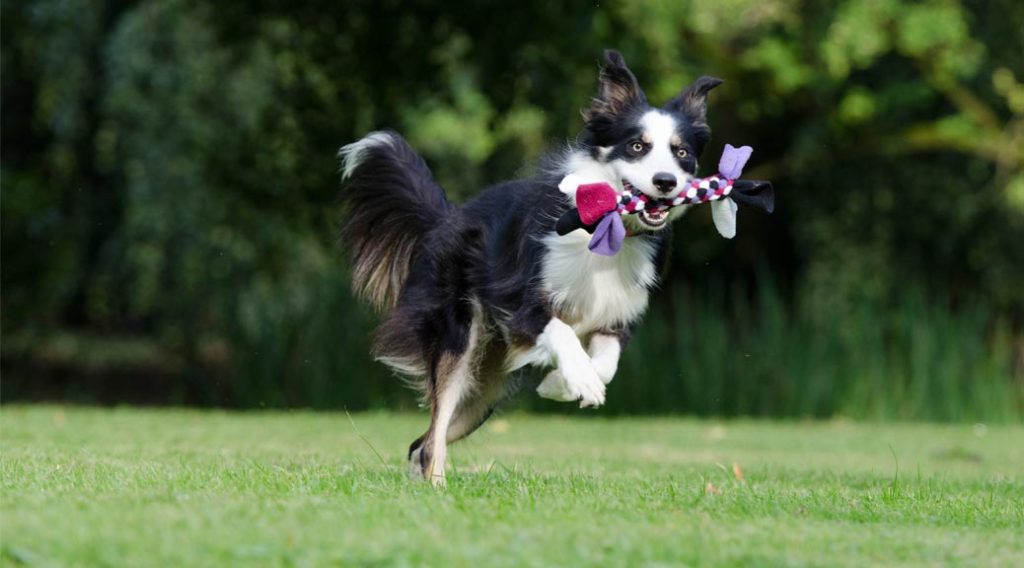The field of sports medicine for people has grown a lot in the past few years, and within veterinary medicine, sports medicine for dogs isn’t far behind. Of course, it makes sense. As people adopt more active lifestyles, they enjoy involving their dogs in activities, too.
Most dogs are more than willing to run and play until they drop. A lot of times, their owners don’t realize inactive or out-of-shape dogs can over-train or hurt themselves just as human “weekend athletes” do.
Major differences in canine and human physiology make dogs more vulnerable to overheating than humans. Dogs don’t tolerate heat as well as people. Instead of sweating, they pant. When the air outside is hot, the panting doesn’t help them cool down as much, so they may be at risk for a heat stroke in situations that wouldn’t normally cause a person to overheat. Most people think if they’re OK in the heat, the dog is OK, too. But that’s not always the case.
Of course, we want our clients to have fun with their dogs. Walking or running and playing together are great for the dog and the owner. We just want people to ask themselves a few key questions before they get into any heavy exercise program with their dog—particularly in hot weather.
Is your dog in condition? Like people, dogs need conditioning to build muscles and cardiovascular fitness before walking or running long distances. If you want your dog to go with you on long-distance walks or runs, start with short distances and increase distance gradually.
Is your dog old enough for running? It takes 12 to 24 months, depending on the breed, for a young dog’s skeletal system to mature. Your veterinarian can advise you about your breed. Until then, limit running, jumping and other strenuous exercise.
Does your dog have hip dysplasia? Hip dysplasia is a common orthopedic problem in dogs, especially in the larger breeds. If you have a breed that’s prone to hip dysplasia, or if your dog seems to have trouble getting up and moving around, you need to avoid strenuous exercise until your veterinarian X-rays your dog’s hips.
How’s your dog’s cardiovascular system? Any kind of aerobic exercise works the cardiovascular system. Before you get into a strenuous exercise program with your dog—especially if it’s an older dog—you should have a veterinarian check for heart defects or disease.
Is your dog obese? It’s a great idea for overweight dogs to get exercise, but you should start slowly and build up levels of exertion gradually. To tell if your dog is overweight, you should be able to feel, but not see your dog’s ribs.
Does your dog have access to fresh water? Water is necessary for proper muscle function and flushes out waste products without damaging the kidneys. Water helps keep a dog cool, too. We suggest taking along a water bottle or canteen when exercising with your pet.
Do you know the symptoms of heat stroke? Dogs do not tolerate heat as well as humans. Hot weather can be deadly to dogs if they overheat enough to have a heat stroke. If your dog pants incessantly, feels hot to the touch and has pale or blue gums, you must cool him down immediately. Douse him with cool water and get him to a veterinarian at once. Some breeds are more vulnerable to heat stroke than others. Any dog with a pushed-in face, like a Boston terrier, a bulldog, a pug or a Pekingese, is usually more likely to have serious problems with heat than a breed with a longer muzzle.
The veterinarians at Brownsburg Animal Clinic agree the benefits of exercise for dogs far outweigh the risks, provided owners take the recommended precautions. We don’t want to scare anybody, and we certainly don’t want to discourage people from exercising and playing with their dogs. We just want to be sure dog owners are aware of possible problems before they happen.

